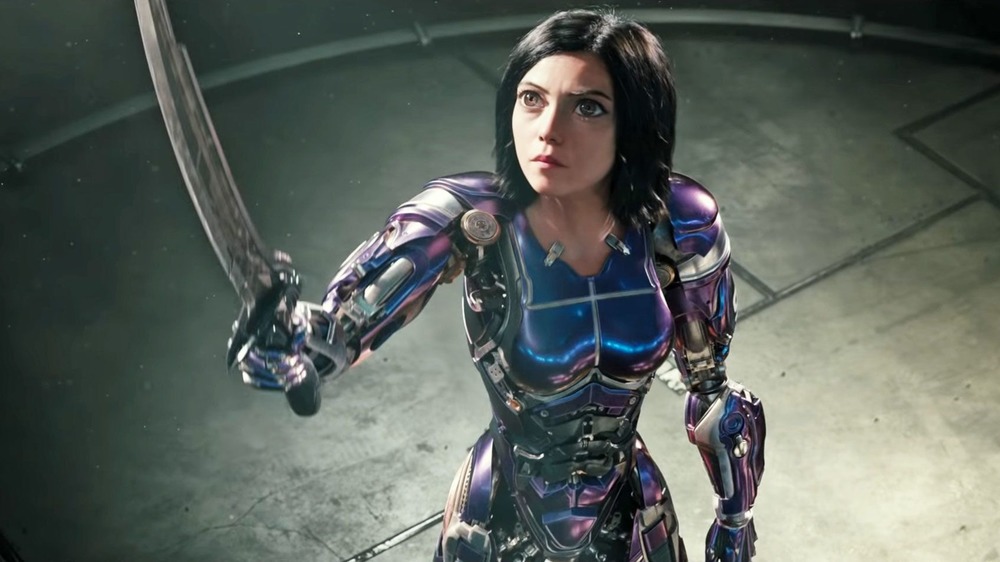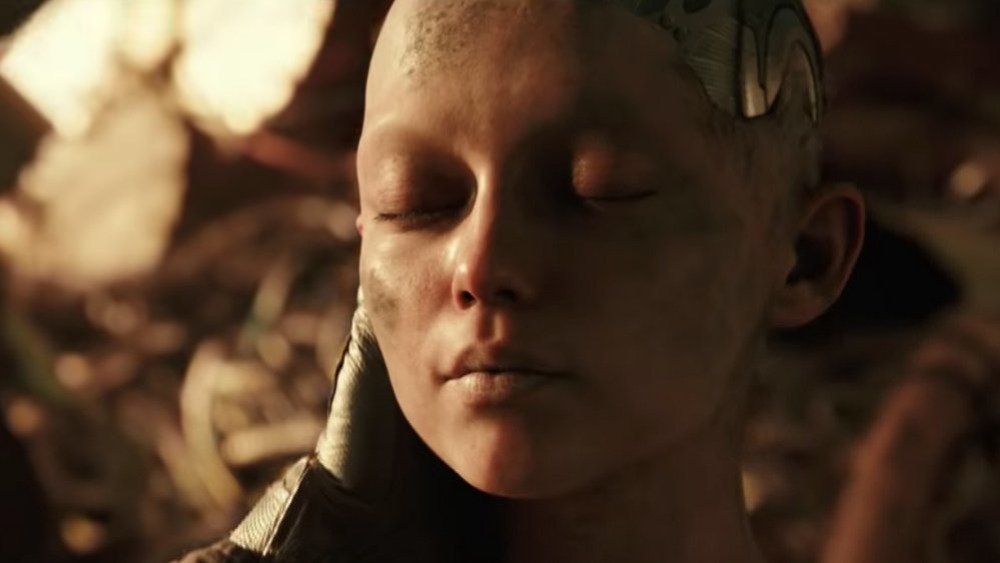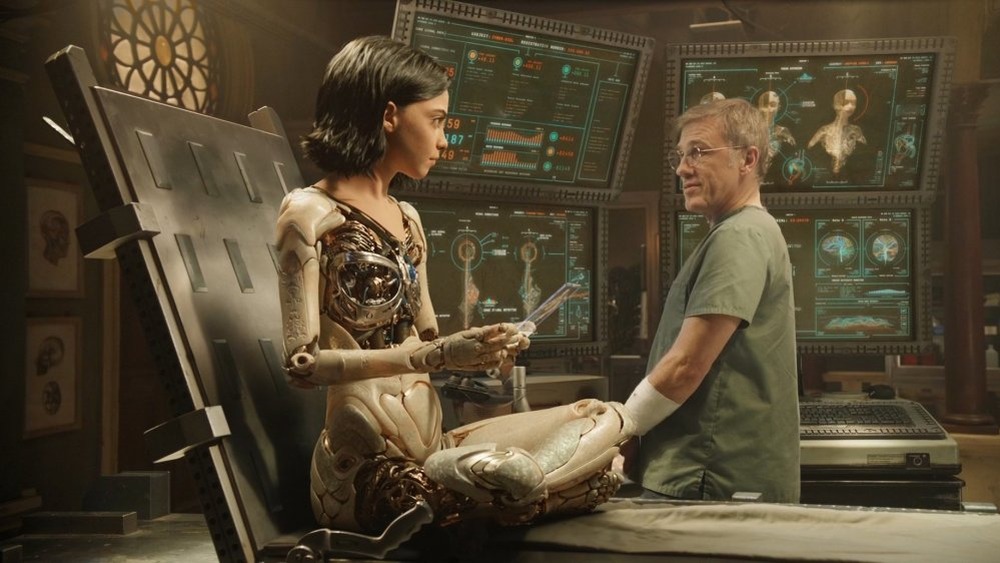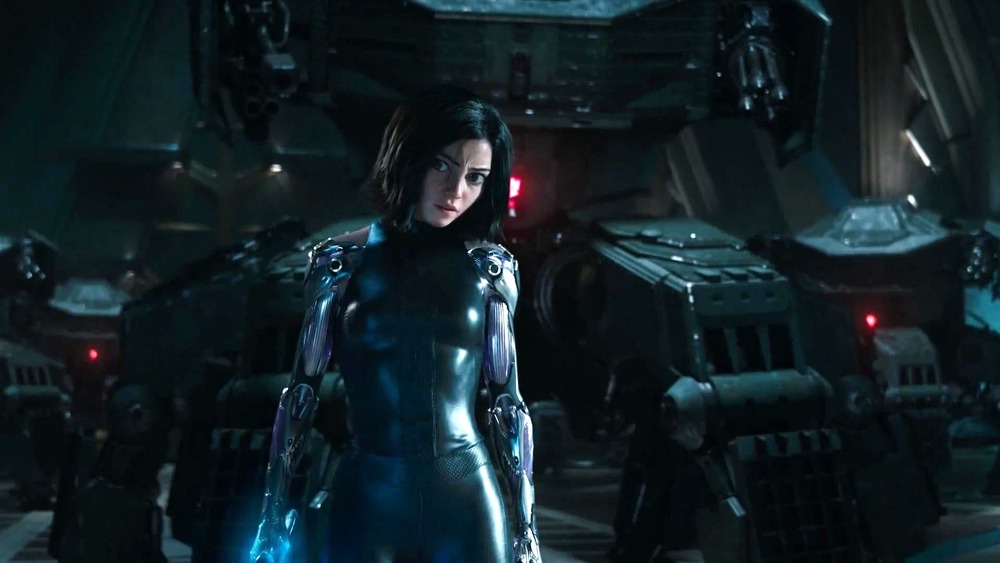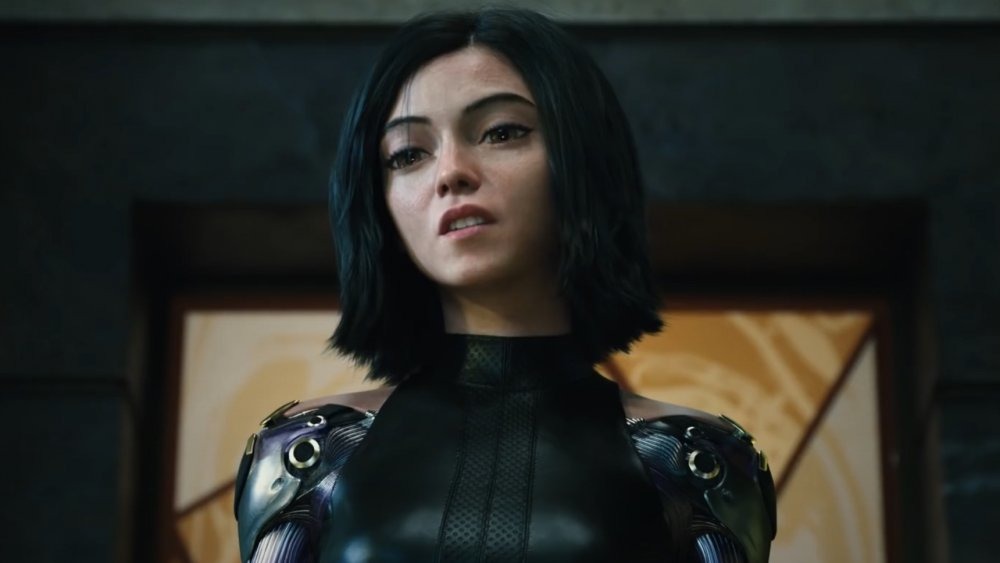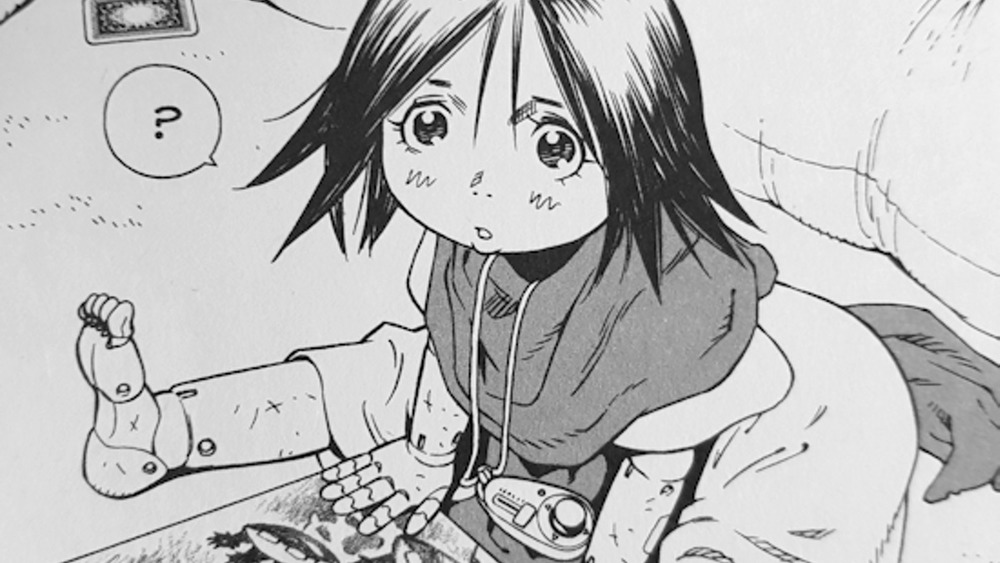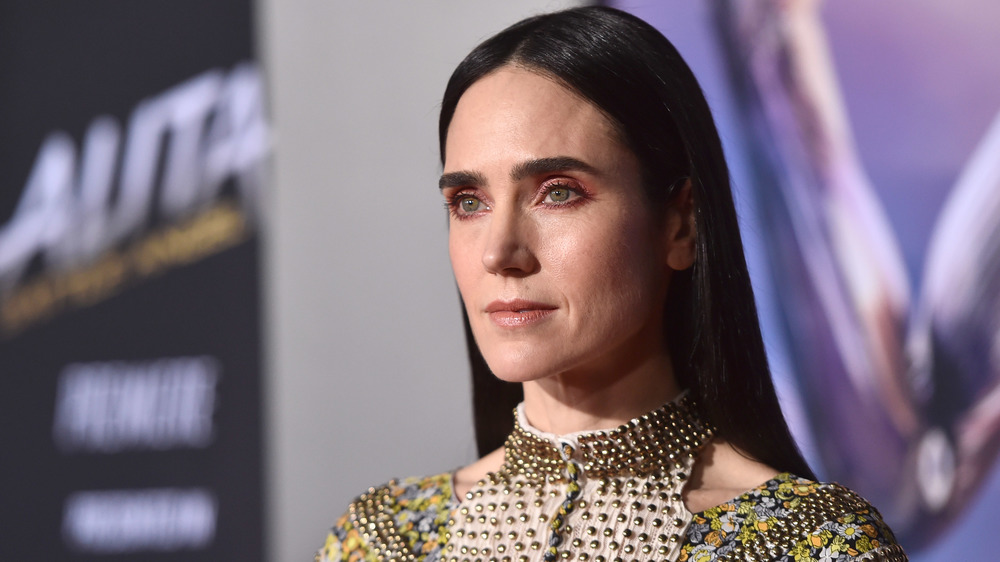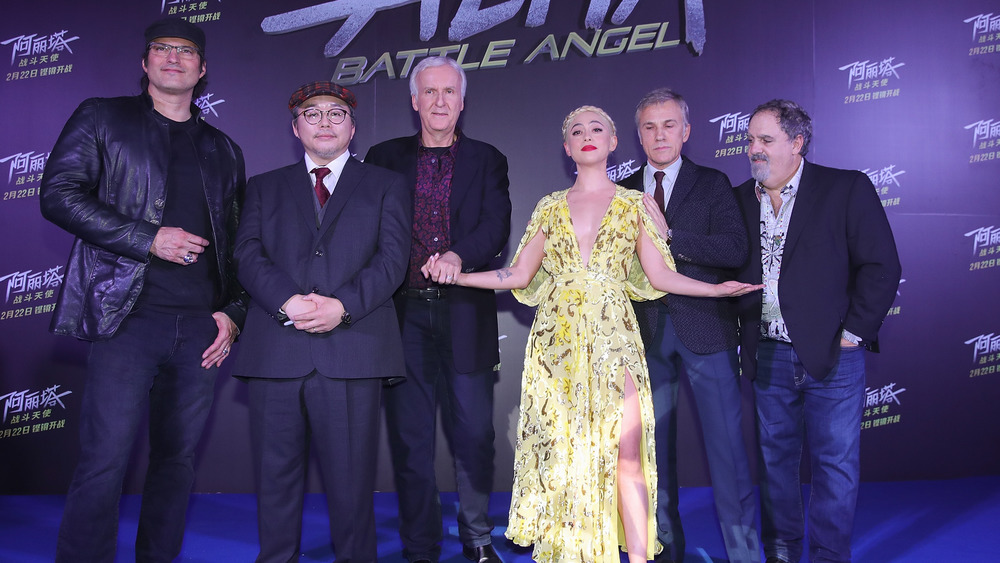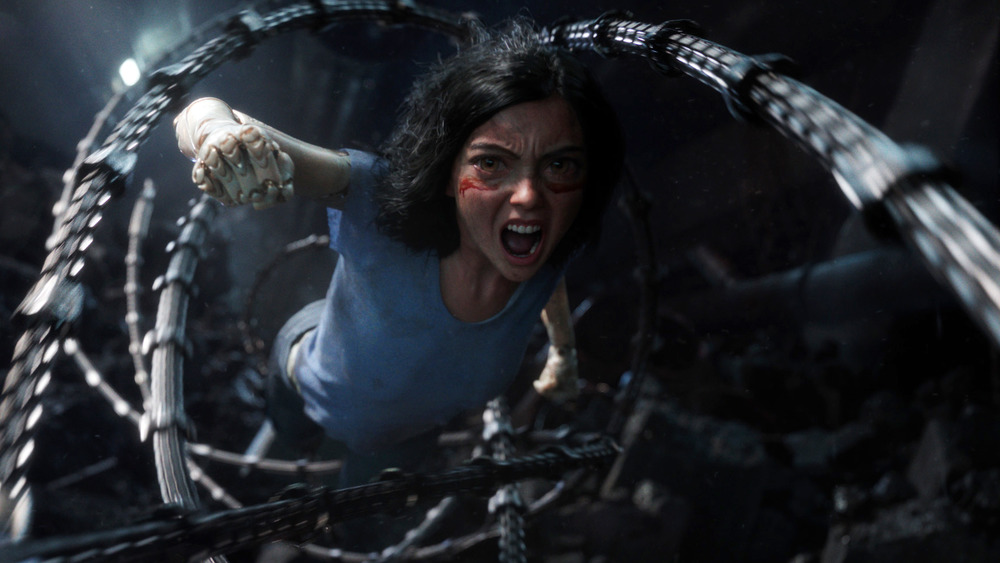Alita: Battle Angel's Backstory Explained
Alita: Battle Angel is a franchise with a fiercely devoted global fanbase, first following the manga and original video animation (OVA) by creator Yukito Kishiro, debuting in 1990, and later the 2019 adaptation written by James Cameron and Laeta Kalogridis and directed by Robert Rodriguez.
The story takes place in the year 2563 in Iron City, long after a great war known as "The Fall," which razed the Earth we once knew. In the film, Dr. Dyson Ido (played by Christoph Waltz) finds the head and torso of a cyborg teenage girl in a junkyard. Humanity is now intermingled with cyborg tech, and Dr. Ido endeavors to bring this girl back. He calls her "Alita" and we learn the body she inhabits was meant for Ido's daughter, also named Alita, who was murdered.
Alita (portrayed by Rosa Salazar in a tour de force of motion capture acting) is reborn, but not restored. Her past is a mystery, but flashbacks plague her. Soon she learns just how capable she truly is, but has no idea how or why... or who she actually might be. If you came away from Alita: Battle Angel just as confused as Alita is during her efforts to piece together her own history, never fear — this is Alita's entire backstory explained. Spoilers follow.
Alita's world
Before we get to the secrets of Alita's past, it's important to review the key moments of the film.
The world of the 2563 envisioned in the story is very different from the one we know. Even as people in the streets strive to make better lives for themselves, it's clear that Earth has been scarred deeply. Nature is doing its best to heal in the post-apocalyptic ruins outside Iron City.
Wherever it cannot, technology fills in the gaps. The citizenry is a patchwork, from flesh and blood beings with a variety of cyber prosthetics to full-body replacement tech. The undercurrent of this society is filled with criminals who steal these cyber parts. Sometimes their victims live, but more often they don't.
Class divisions are a way of life. Iron City is caught in the shadow of Zalem, a floating city held in place by cable tethers and anchors. The wealthy reside in Zalem, far from the junkyards, and among them is a puppet master silently pulling strings.
Memories remain
Although her history is a blank to her, Alita learns one thing from her past: she is fully capable in the long-forgotten cyborg martial art of "Panzer Kunst." The name alone reveals clues. Translated roughly from German, "kunst" is "art," while "panzer" is the term for "tank" or war machine... the martial art for a mecha.
In a pivotal scene from the film, Alita and Dr. Ido are ambushed by a gang of cyber serial killers. Alita's previously unknown training reemerges instinctively, and she kills two of her attackers as a third escapes. She experiences a flashback during the fracas, seeing herself in a battle on another world, a soldier in a war she had no previous idea existed.
Ido reveals to her that he is a hunter-warrior — a bounty hunter who hunts those who prey on citizens as their attackers attempted to do, and steal their robo-prosthetic implants. Other flashbacks throughout the film give Alita insights into her past, including one in which she and a cyborg battalion climb the cable tethers up to the floating city of Zalem.
The berserker body
On a day trip outside the city, Alita and her new friends come to a body of water surrounded by flora, evidence of the natural world reclaiming the land after the Fall. Significantly, there is a crashed ship in the middle of the lake, part of the United Republics of Mars (URM), the combatants whose attack brought about the Fall on Earth.
She leaves the others behind to explore the wreckage. Inside the derelict ship, the long-abandoned onboard mechanisms respond to her, and she to it, with little surprise. With a few instinctive finger swipes, a door opens to reveal a "berserker" body, a frame once used by the shock troops of the URM. She takes the body core with her and tries to convince Dr. Ido to implant her in it, but he refuses. In an act of rebellion, Alita registers herself as a hunter-warrior.
Later in the film, Alita is again set upon by the previous attacker who survived — only he's been upgraded, and this time he nearly destroys her.
Dr. Ido relents in performing the berserker transplant as her body has been critically damaged. The nanotechnology in the shell conforms to her will. A major piece of the puzzle of her history is revealed: she was part of the attack forces of the URM. Ido, her father figure, assures her that even though the body was that of "the enemy... That's just a shell. It's not bad or good. That part's up to you."
Where the secrets hide
We know a lot about Alita, but what came before that?
Centuries before the events of Alita: Battle Angel, Earthlings struck out to colonize and terraform other planets. Their aim was to extract the resources from all the planets and amass wealth. Mars was one of these colonized planets. However, seeing the potential wealth the Mars colonists could take for themselves, they struck back against imperialism. A great war, the Terraforming War, was engaged not for the sake of independence, but for power and dominance.
Beyond that basic setup, there are three complementary, yet still competing, narratives that undergird the Battle Angel story: the original series by Yukito Kishiro, the subsequent Battle Angel OVA, and the James Cameron/Laeta Kalogridis adaptation, "edited" to shooting length by director Robert Rodriguez, as he explains in the documentary on the Blu-ray edition. Alita's origin is culled from all three sources.
20th Century Fox provided significant backstory elements in an electronic press kit featurette for the film's marketing. However, the manga and OVA's info dominate in our retrospective since the U.S. film only refers briefly to these key elements. If a second Alita film is ever made — one that delves deeper into her past — it could diverge even farther from the source material.
The fall and Alita's descent
The final push in the war was a bioweapon that evaded Earth's defenses and was unleashed. The disease spread globally, killing millions and quickly overtaking the meager virus-mitigation options they had. The citizens of the floating city of Zalem sealed themselves in and survived as the rest of the world crumbled. In time, Zalem would become the single hub of true power in the world.
As the audience learns from Alita's flashbacks, a URM cyborg army invaded Earth and attacked Zalem, but they were not successful. 99 was a part of the army that, at the end of this incursion, would be relegated to the scrapyard of Iron City. Earth launched a counterstrike against Mars that was equally devastating, sending nanobots to wipe out the former colony.
Not everyone died, neither on Earth nor on Mars. Surviving refugees converged in Iron City, the area just beneath Zalem, as the rest of Earth was rendered inhospitable to survivors. In time, the world would recover as nature crept back into regions of Earth untrammeled by humans.
Through stringently enforced rules, peace took hold among the survivors. Life on the ground was hard, and the governing laws cruel but nonetheless effective. Iron City's scrapyard housed the remnants of the great war. Among the scrap was left the core of Alita... to be found one day by Dr. Ido, beginning the narrative of the franchise.
Yoko the human baby
As fans of the franchise eventually learn, Alita was born as an ordinary human on Mars in the midst of these tensions. Her parents named her Yoko.
The battles and incursions between Earth and Mars, and the worlds that fell under their control, escalated. With a war fully enjoined, the infrastructure of the Mars colonists was attacked, destroying the home of Yoko's parents, and killing them in the process.
Yoko's brain survived and was transplanted into a basic cyborg body for war training. At the age of 17, she ceased to be the human Yoko and started her life as 99, an elite soldier, and began to learn the ways of Panzer Kunst. Eventually, she was identified as a high-level prospect for the URM and her brain was transplanted again, this time into a "berserker" battle cyborg core. It was the top-of-the-line shell designed by the Venusians, made from nanotech, and was provided to 99 as she was considered a valuable military asset.
A story of Biblical contortions
There are several allusions that can be inferred from the Fall, the primary one being the "War in Heaven" from the Book of Revelations:
Then war broke out in heaven. Michael and his angels fought against the dragon, and the dragon and his angels fought back. But he was not strong enough, and they lost their place in heaven. The great dragon was hurled down—that ancient serpent called the devil, or Satan, who leads the whole world astray. He was hurled to the earth and his angels with him. — Revelation 12:7–10
We learn that Dr. Ido and his ex-wife Dr. Chiren (played in the film by Jennifer Connelly) once lived in Zalem, but were apparently "cast down" into Iron City. While the cyborg Alita would not earn her status as "Battle Angel" until later, her former life as 99 — and her fate as a fallen avenging angel during the attack on Zalem — dovetail into this notion of Zalem being heaven and Iron City being a hell into which the wretched and rejected are condemned. The conceit of this parallel opens up intriguing ideas. The audience is primed to take sides, with Zalem the shining, aspirational destination and Iron City a punishment.
Yet we see that great and terrible things flow from Zalem, and as hard a life as Iron City provides, the people there are not all bad. It's just as Dr. Ido says to Alita after she is implanted into the berserker body, "It's not bad or good. That part's up to you." The movie doesn't dig into this aspect of Alita's life as 99, but the preexisting material suggests she came to Earth to attack it. By definition, it means she was there to kill humans and through a very narrow lens could be seen as "the enemy."
The overarching theme of Alita: Battle Angel is free will. Individuals have freedom of choice and there's always a chance for redemption, even if it involves "sins of the past" the individual doesn't even remember.
Alita's creator
Born in 1967 in Tokyo, Japan, Battle Angel creator Yukito Kishiro was influenced by mecha anime series like Mobile Suit Gundam. At the age of 17, he published his first manga, Space Oddity. Gunnm — the original title for Battle Angel, which, loosely translated, means "gun dream" — debuted six years later in the publication Business Jump and ran until 1995. An OVA (original video animation) based on Gunnm arrived in 1993, directed by Hiroshi Fukutomi (Galactic Patrol Lensman, Fatal Fury: Legend of the Hungry Wolf).
According to promotional materials on the Alita: Battle Angel Blu-ray, Kishiro had dreamed of making a major, live-action adaptation but realized the material required resources far beyond what the Japanese film industry could offer. In 1999, James Cameron's Lightstorm Entertainment, in conjunction with the former 20th Century Fox, optioned the rights to the manga to make a film. This was to be Cameron's next big project after the massive success of 1997's Titanic. The option from Cameron came as a surprise to the artist, who remains an active manga creator with his series Aqua Knight, which has been running since 1998.
The U.S. film, the Japanese manga, and Gally's uncanny valley
The original manga Gunnm features many similarities to the final U.S. version of Alita, but also has striking differences. Chief among them: the lead character is named Gally, not Alita. Before launching in Business Jump, Gally appeared as a cyborg police officer in an unpublished manga. While the police officer angle was abandoned, the character and the environs of Iron City stuck with writer/artist Kishiro, ultimately becoming the dismembered, amnesiac avenging angel we know and love.
Another difference is Alita's eyes, which are properly proportioned in comparison with other characters in Kishiro's manga, but noticeably larger in the film. Given manga and anime's predilection for wide-eyed characters, the decision, championed by director Robert Rodriguez, was made that Alita should have large anime eyes. An early teaser trailer was cut early in the filmmaking process, partially for marketing the film in advance, but also to gain approval from Cameron and production partner Jon Landau. Cameron commented that "the eyes needed to be fixed," but not by making them smaller. Instead, he instructed Rodriguez to make the irises bigger and more realistic.
Unfortunately, it didn't work for everyone. Film critics from National Public Radio, the Chicago Tribune, and the Boston Globe, among others, asserted the look was too "uncanny valley" for them, referring to a psychological barrier where a person sees what appears to be another person or living entity but is instead a close duplication. The very slight dissonance being recognized by the brain conflicts with what looks perfectly normal to the eye, creating a cognitive break that causes participants to be "thrown out" of suspension of disbelief.
From Sin City to Iron City
In 1994, James Cameron began development on the movie Avatar. While he intended to juggle it with Alita: Battle Angel, it became apparent that both were massive undertakings and something had to give. Cameron shifted his full attention to Avatar, with Alita: Battle Angel potentially serving as a follow-up.
Avatar's success changed Cameron's course as he saw many more stories to be told within the franchise. He took on an executive producer role for Alita and sought a director that would stay faithful to his vision.
Cameron found his Alita partner in director Robert Rodriguez. Initially known for gritty action and genre films like Desperado, Machete, and From Dusk Til Dawn, Rodriguez's filmography is surprisingly varied. At the heart of Alita is a family drama between the cyborg and Dr. Ido. Rodriguez's work with the Spy Kids franchise showed him capable of both the macro and micro storytelling needed to bring the more intimate parts of the narrative to the screen.
Rodriguez also understands comics-to-screen translation. Prior to Alita, he made the screen adaptation of Frank Miller's Sin City in conjunction with Miller, an experience that closely paralleled the working relationship he would have with Cameron for this film.
The original property was titled Battle Angel Alita, not Alita: Battle Angel. Why the shift for the U.S. audience? Cameron's longtime production partner Jon Landau stated it was because of superstition — specifically, Cameron's apparent success with "T&A."
It's not as scandalous as one might assume. Landau noted that Cameron's most successful films either started with the letter "A" – Aliens, Abyss, Avatar — or "T" for Terminator and True Lies. Flipping "Alita" before "Battle Angel" was a bid to the fates to continue the streak.
End of the line for Alita?
It took a long time for Alita to come to the screen. 20th Century Fox optioned the property in 1999, but principal photography didn't begin until 2016.
The film finally debuted in the United States in February of 2019, roughly 20 years after being optioned, and while its worldwide gross was over $404 million, it was deemed a disappointment. Its reported break-even point, factoring in the costs of marketing and distribution above production, was presumed to be somewhere around $350–$500 million.
Another knock against the film was its competition. Because of blockbusters from Disney and its subsidiaries Marvel Entertainment, Pixar, and Lucasfilm reaping returns north of a billion dollars, Alita: Battle Angel's final tallies appeared that much more unspectacular in comparison. Little more than a month after the movie's theatrical debut, Disney acquired the Fox entertainment division for $71.3 billion, further casting a shadow over Alita.
However, audience recognition and interest in the property have increased, and there's still plenty of material ripe for adaptation. In another strangely ironic twist, the film might benefit from 2020's global COVID-19 pandemic — after mass closures of theaters and film productions shutting down worldwide, the theaters that managed to reopen later in the year often needed to get creative about the films they screened.
Thanks in part to the fan movement Alita Army, the movie returned to the cinemas on October 30, 2020. Fears of large audiences contracting the virus at the cineplex may yet stifle Alita's resurrection, but a strong response could reignite hopes for the franchise.
